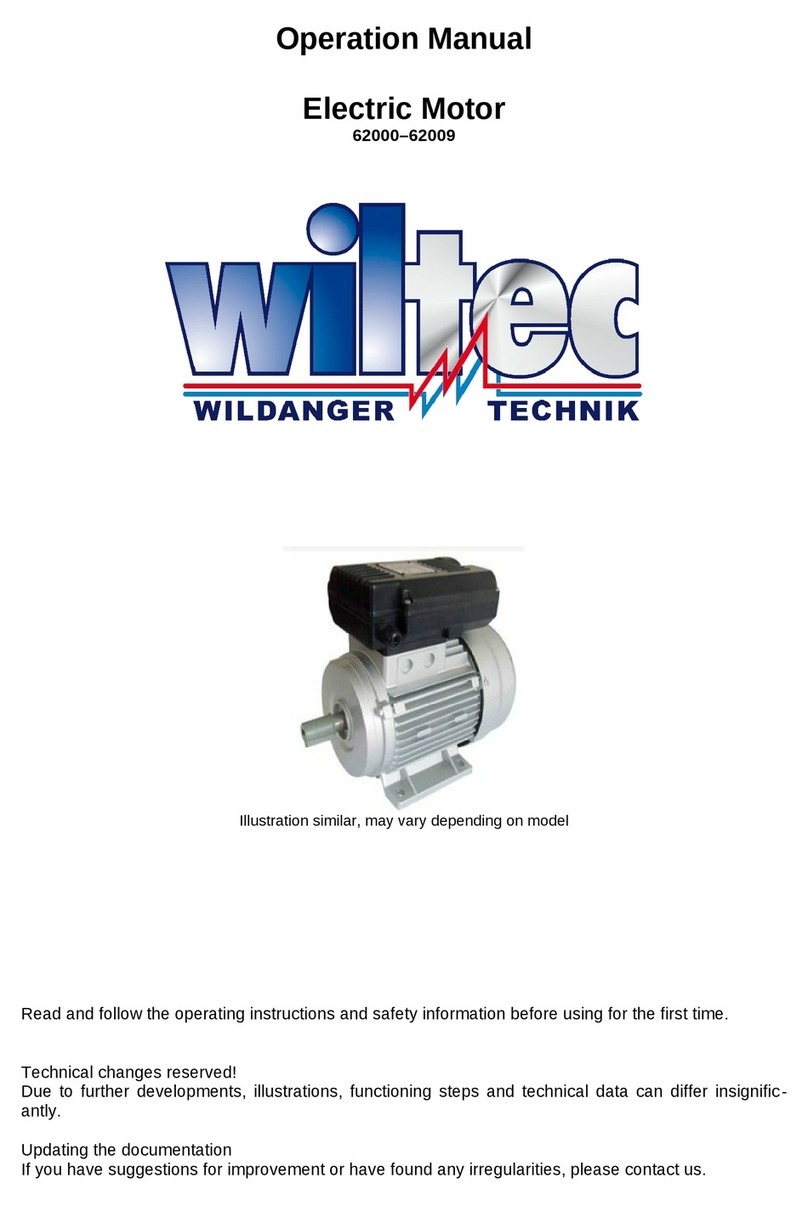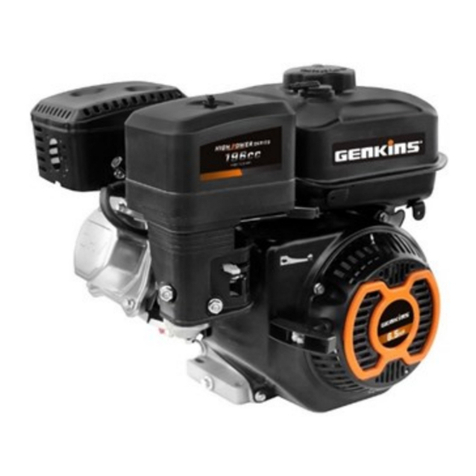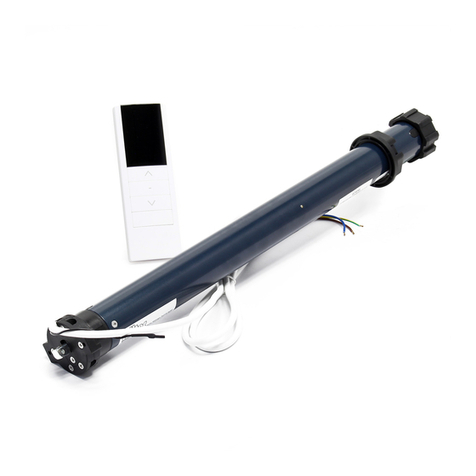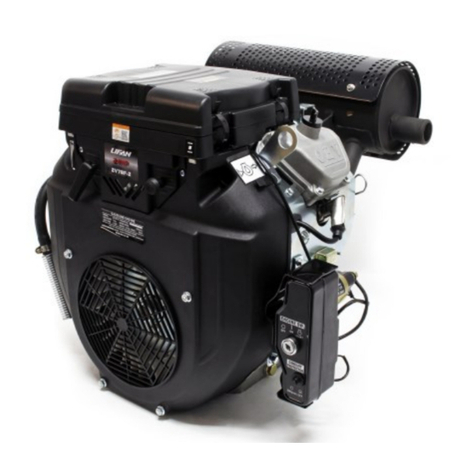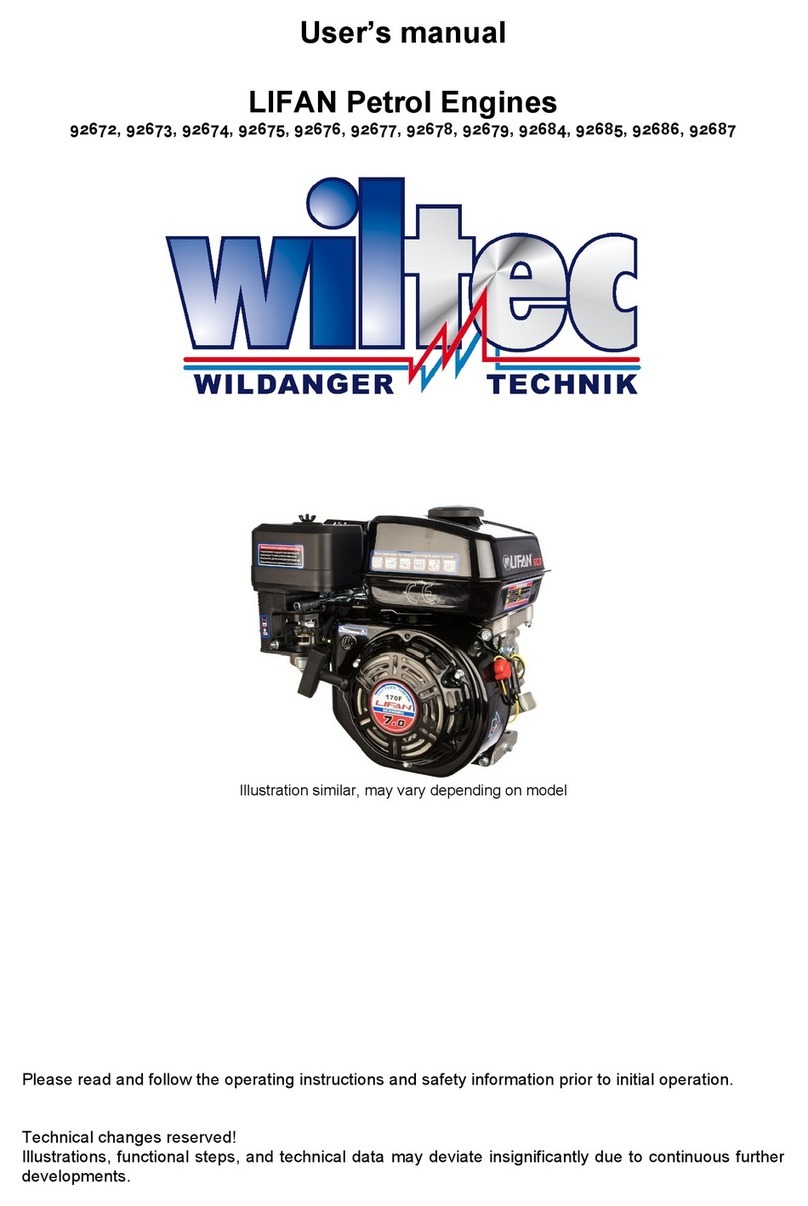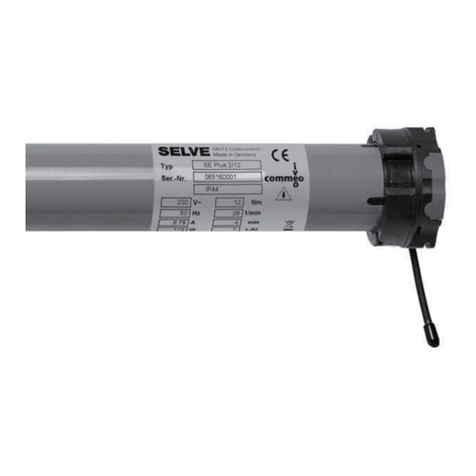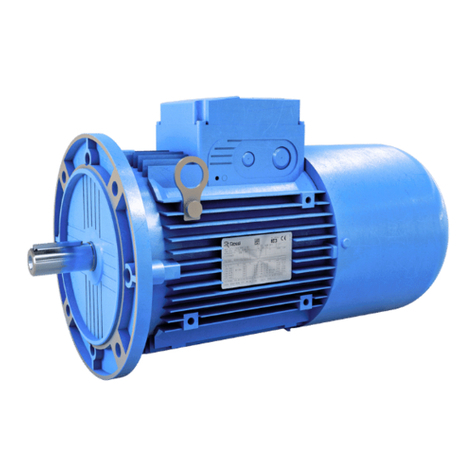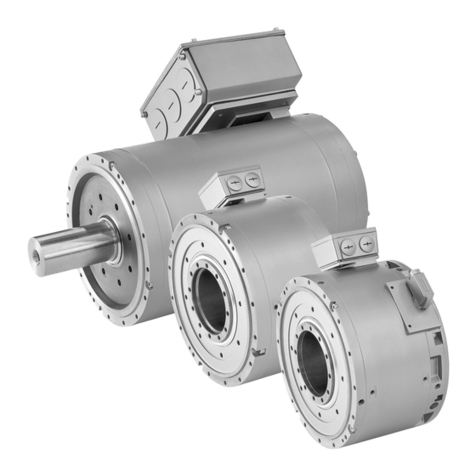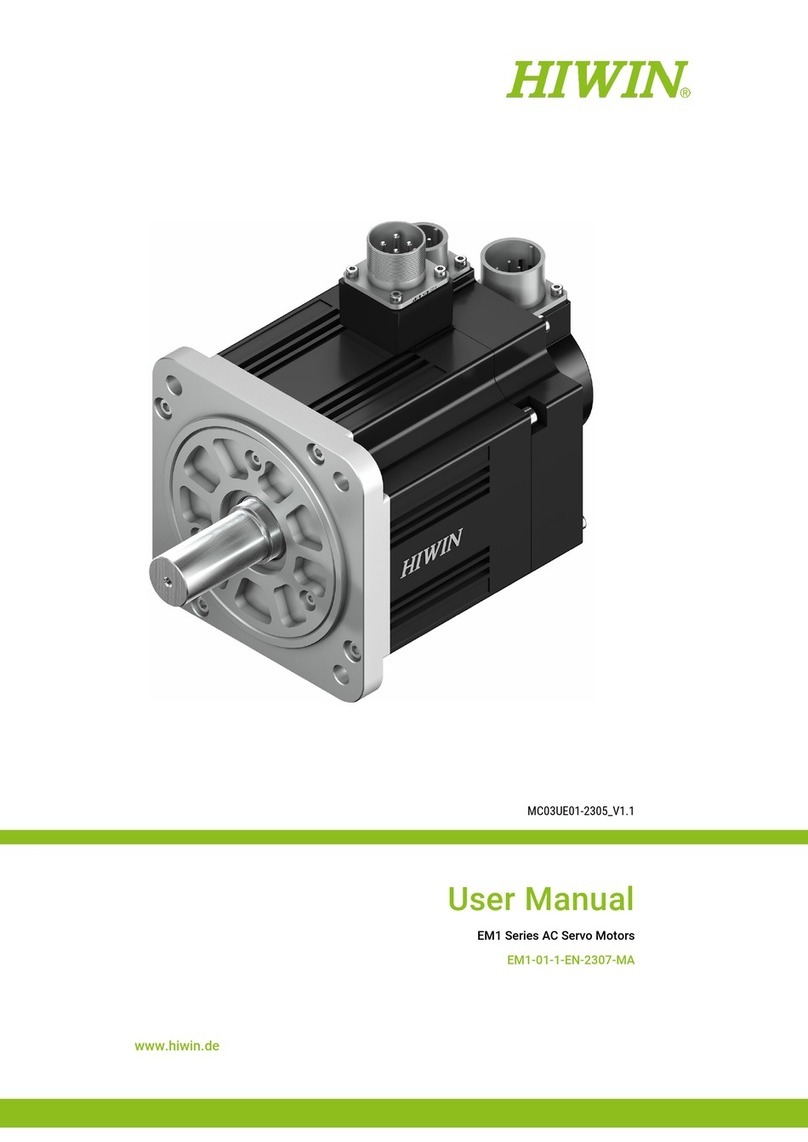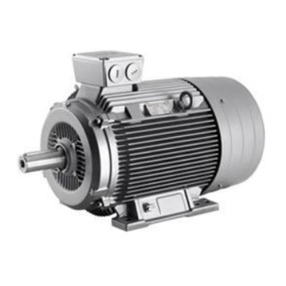© by WilTec Wildanger Technik GmbH Item 92670 Page 9
http://www.wiltec.de 11 2023-1
Warning!
•There is a risk of burns and injury when refuelling, as petrol is flammable and explosive.
•Switch off the motor and keep it away from naked flames, sparks, and heat sources.
•Refuel outdoors and wipe up any spilt fuel immediately.
Important!
•Petrol can damage paint and plastic parts. Avoid spilling petrol when refuelling, as damage
caused by petrol splashes is not covered under warranty.
•It is important never to use aged, contaminated, or mixed oil and to ensure that no dust or water
gets into the fuel tank.
•Before checking the oil level, place the petrol engine on a level surface and unscrew the fuel
filler cap. If the oil level is too low, top up the oil. Observe the operating instructions for the
engine and accessories when refuelling.
•Only fill the fuel in a well-ventilated area before starting the petrol engine.
•After operating the petrol engine, wait until it has cooled down completely before operating or
refuelling it again.
•Be careful when refuelling the engine to avoid fuel splashes.
•Under different operating conditions, the oil level may fall below the upper limit value.
•After refuelling, the tank cap should be firmly tightened.
•Avoid storing petrol near lights, stoves, electrical devices, power sources, and other objects that
can produce open flames, sparks, or high temperatures.
•Spilt petrol is not only a potential fire hazard, but also pollutes the environment. Therefore, wipe
up any spilt petrol immediately.
Motor oil
•Engine oil plays a decisive role in the performance of the engine. Please only use 4-stroke petrol
engine oil.
•Check the API label on the engine oil container. Unless otherwise specified, we recommend
engine oil SJ 10 W-30, which should at least correspond to class SE.
•If the average ambient temperature in your area is within the temperature range shown in the
illustration, you can use the appropriate engine oil viscosity from the illustration. For ranges
below −20 ℃, it is recommended to use a 0 W-30 engine oil for easier starting.
Ambient temperature
Check oil level
Make sure that the motor is on a level surface. Make sure that the oil level is within the recommended
range.
1. Start the petrol engine and let it idle for 1–2 min. Leave the motor running for a further 2–3 min
after switching off.
2. Remove and clean the oil dipstick.
3. Insert the dipstick into the oil filler neck and pull it out to check the oil level.
4. If the oil level is too low, open the oil filler cap and fill with the recommended engine oil up to the
upper mark on the oil dipstick.
5. Then refit the oil dipstick and the oil filler plug.


